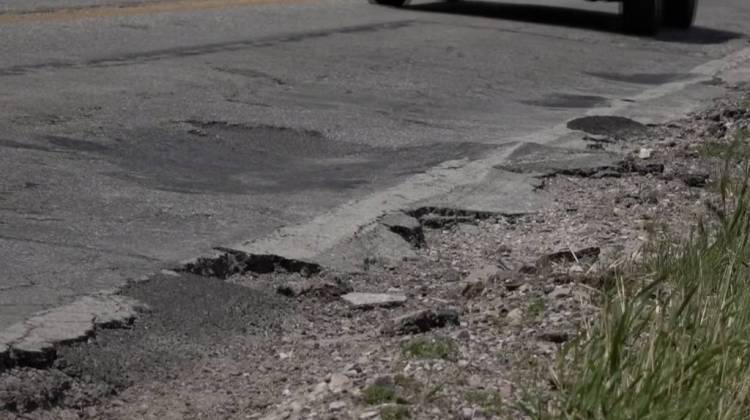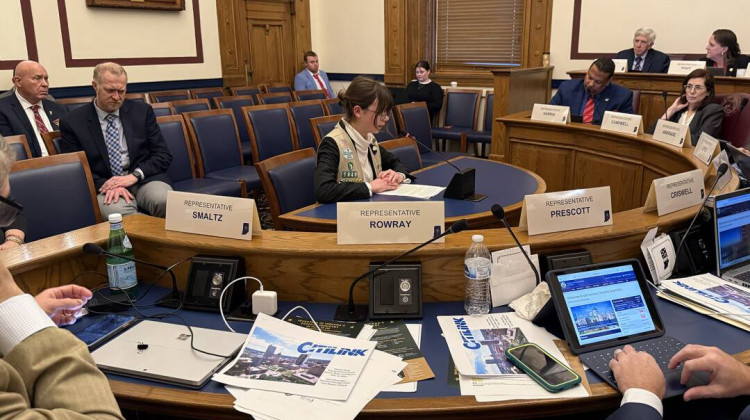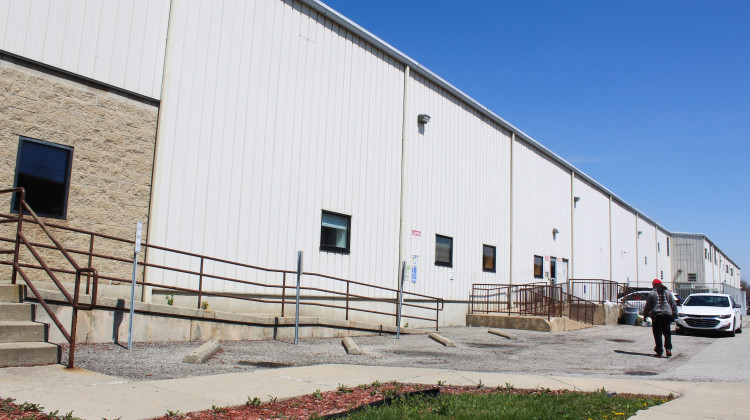Voting is a big issue as we get closer to Election Day. But that isn’t the only way people are making their voices heard this year. Over the past few months, Side Effects Public Media’s Darian Benson has followed four young activists as part of an audio diary project for America Amplified reporting initiative. One of them is Taylor Hall, a 20-year-old who helped organize one of the summer’s largest protests in Indianapolis.
Transcript
My name is Taylor Hall. I am 20 years old.
I started protesting after the killing of Dreasjon Reed, on May 6, 2020. And since then, I've just been protesting every week every day for social justice.
Dreasjon Reed is an Indianapolis man, he was on Facebook Live on May 6, when he was getting pulled over by the police. It was a high speed chase. It started on the interstate downtown and went up Michigan road, which is kind of in the middle of Indianapolis. On the live video, you see him driving away from the police, and he got out of the car and started running. And then the video you can hear about eight gunshots and see him fall to the ground. ... That sparked the movement I'd say in Indianapolis because of how close it was to everyone.
It definitely was, I'd say kind of weird and kind of surreal to see how many people in Indianapolis came out for this cause. Indiana is a very conservative state. So just to see so many people of many different backgrounds and ethnicities … and ages and genders coming out to support is amazing. We need not just legislative change. But we also need change in our communities, we need to uplift each other. We need to support each other. We need to continue to work together to fight this battle of racism and social injustice.
We can come out and protest, but nothing's gonna change unless we vote. We change the people in office so that they are working for our best interest to be made and for policies and legislations to be made that will benefit the oppressed groups inside of the community. So we had to stress that every protest and sit in that, yes, thank you for showing up for this protest, but also show up at the voting polls. And we had voter registration so that they would, because without voting, then there will be no change. And there will be no differences made in our communities.
I started making music after the killing of George Floyd, my father wrote the song, “I Can't Breathe,” and it's about what happened to him and about what's happening inside of our society today. One line is: “Is it 2020 or 1969.”
I knew if people didn't understand me through my protest or yelling, they might understand it through my music. Or they might understand it by my artwork, or they might understand it through my clothing choices.
I want to try to bridge the gap between government officials and the youth. If I ask any kids that I'm working with, ‘Who's your mayor, who's your governor, who's your representative?’ They're not going to know. And I think that's a problem.
The next generation is the future, and they're going to be here a lot longer than we are. So if we don't empower them and make them feel a part of this movement...
If they don't feel a part of this, and they don't see why we're protesting, then we'll be 20 years, 50 years, 100 years later, still protesting for the same things that we were protesting for and our ancestors were protesting for.”
Behind This Story
Darian Benson produced this story Side Effects Public Media as part of the America Amplified: Election 2020 initiative, using community engagement to inform and strengthen local, regional and national journalism. America Amplified is a public media initiative funded by the Corporation for Public Broadcasting. You can follow America Amplified on Twitter @amplified2020.
Read more about what Darian learned in this Q&A:
Q: What did the people you talked to say about the experience of being interviewed for public radio?
Each of the four people I interviewed for this project were excited to share their story for public radio. This project focused on younger adults, pretty much every source agreed that this was a demographic not usually represented in public media.
Q: What surprised you about this type of community engagement?
I was surprised by how open sources were and how willing they were to share their lived experiences. All of the interviews were done through Zoom, so I was worried that a video call would make more difficult for sources to get comfortable and open up. However, that was not a problem and sources were very eager to share.
Q: Do you plan to go back to this group for more conversations? When and how? I do hope to go back to this group for more conversations, hopefully after the election at some point. I think it would be interesting to do a follow up conversation on Zoom, maybe even in person pandemic-permitting.
 DONATE
DONATE







 Support WFYI. We can't do it without you.
Support WFYI. We can't do it without you.